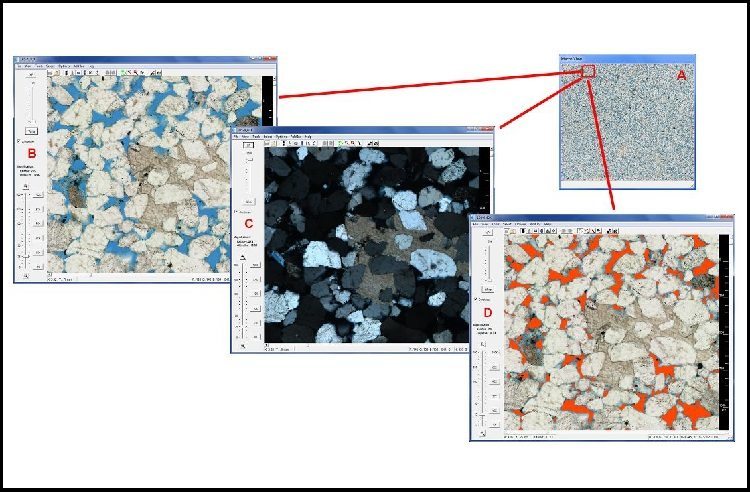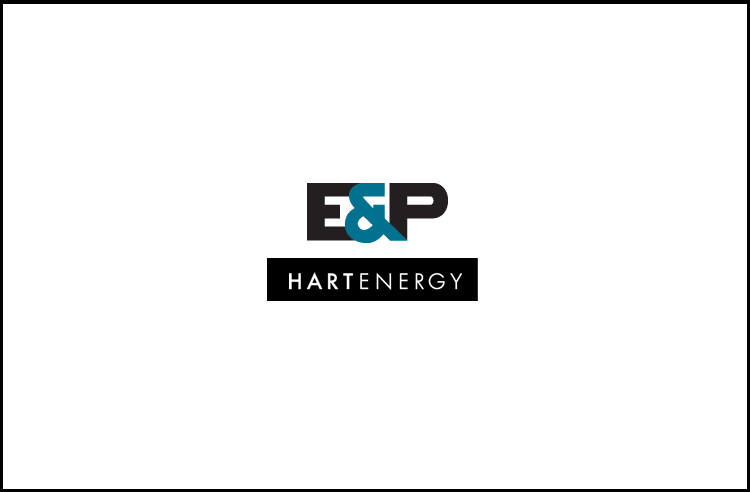Chris Prince and Nelson Heskett learned the hard way that if you want something done right, sometimes you have to do it yourself.
In 2005, Prince, who is a geologist, leased the license for his super-high-resolution imaging technology to a company that had the rights to begin marketing it for commercial use. Although Prince joined that company as an employee, the technology sat on the back burner for several years, with no activity and no clients. By 2010, Prince had had enough.
“I packed up my toys and technology and took it with me — I broke away,” he said. “They hadn’t done anything at all with the technology. They just didn’t have the ability to market it.”
Prince then joined longtime sales and marketing executive Heskett, and the two immediately got to work marketing PetroArc International’s large-format imagery services to the medical and oil and gas industries.
PetroArc’s technology is unique in that the minimum resolution is 1,360 dots per inch — the number of dots a printer prints per inch, the higher the number of dots the sharper the image — equivalent to being magnified 10 times. The technology allows producers to get a more accurate picture of the characteristics of reservoirs from the core, plugs and cuttings. It also provides analysis and storage of that data by tying virtual microscopes with document access to store the information in one location.
Another advantage to the technology is it allows preliminary core analysis work to be performed at the well site, rather than having to take core samples back to the lab.
Prince said PetroArc advanced the original technology based on feedback he and Heskett got after sitting down with as many potential clients as would let them in the door. Having broken away from the company that was originally supposed to market the technology, they knew they had their work cut out for them.
Luckily, Prince had a lot of industry contacts as a result of publishing papers and articles in trade magazines on a regular basis. And Heskett had the sales and marketing experience to help capitalize on Prince’s hefty Rolodex.
“The first thing we did was research our sector by finding out from customers what their needs were,” Heskett said. “We contacted companies and asked if we could make presentations to them about our technology, and then we took their feedback and applied it to the technology.”
Prince said he and Heskett made some major changes based on that input, the biggest being providing clients the ability to access all their data — such as well logs, lab reports, image analysis or even company reports — in one spot.
But because PetroArc’s finances were so tight, the partners didn’t have time to pull back the technology to make the adjustments — they simply made changes as they went along.
“We did everything on the fly,” Heskett said. “It wasn’t possible to do it any other way.”
While things were lean in the beginning, PetroArc got its first sizeable contract last year through a $250,000 deal with the University of Wyoming. The project called for PetroArc to process core at a well site and transport it to a processing facility where it was then cleaned, slabbed — cut down the side to expose a flat surface — and imaged at 2,400 dpi. PetroArc then assembled the core imagery into an archived core, which, along with PetroArc’s software, is being used by the university to describe the core and make grain-size logs, as well as other tasks.
Meanwhile, PetroArc recently landed a major contract with an oil and gas company, marking its second in that industry and its fourth overall. While one of the oil and gas customers is using PetroArc to image sidewall cores to estimate their permeability, another is primarily interested in using the company’s MicroPet images — microscope slides of ultra-thin sections of rock — and software.
Prince said the company is in negotiations with a fifth client that would add an additional $1 million per year in revenue to PetroArc’s stream.
While things are now on an upswing, “we definitely struggled those first couple of years,” Heskett said. “It hasn’t been an easy ride.”
The partners have reacted by keeping the purse strings tight. Although PetroArc now has six employees, Nelson and Heskett still do a lot of the “dirty” work themselves, including going into reservoirs and hoisting core samples, cleaning off mud and even slabbing.
“As owners of a small company, you really have to develop it from the ground up,” Heskett said. “And for us, that means rolling up our sleeves and getting dirty.”
While the company continues to gain exposure through Prince’s articles in scientific journals, the partners have also taken their show on the road.
They regularly attend trade shows and conventions to tout PetroArc’s technology.
“We are still not in a position to drop $20,000 on a beautiful booth, but we go to the shows and market ourselves there on the floor,” Heskett said.
Often, that marketing effort includes Prince making a presentation on a paper he has written as a featured speaker at a convention.
For now, the partners are focusing their efforts on the oil and gas industry, which has proven to be a stronger market for the technology than the original medical focus.
The company’s microscopic images are still being used by several medical universities to teach histology, cellular biology and neuroanatomy. They are required viewing at the medical school at the University of North Carolina at Chapel Hill.
But Prince said oil and gas has already proven to be a more lucrative market.
“The medical industry was first for us, but the money is just not there — the market is so overstuffed,” he said. “Our focus now is oil and gas. That’s where our network is, and that’s where we see our future.”
- PetroArc International
- 2011 revenue: $250,000
- 2010 revenue: $10,000
- Top Execs: Chris Prince, president, and Nelson Heskett, vice president
- Employees: 6
- Founded: 2005
- Business: Provides high-resolution imagery and services to the oil and gas industry and medical science
- Web: petroarcintl.com





